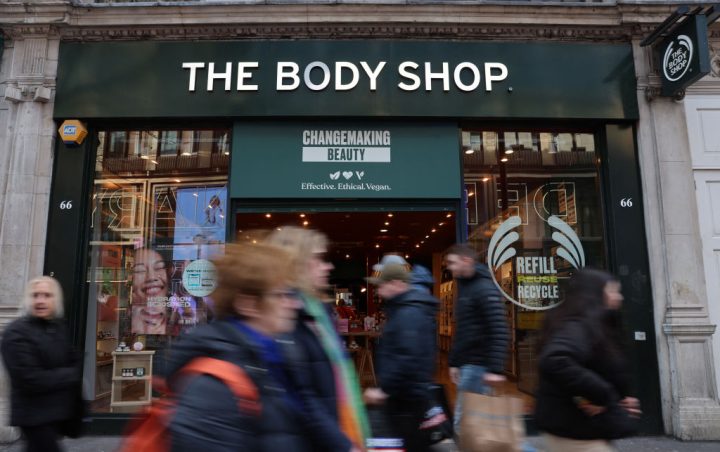The collapse of the retail chain The Body Shop marks a new low in the sorry tale of Britain’s shops and their struggle for survival. The brand was put into administration by private equity firm Aurelius only a few weeks after it had been acquired from its former owners Natura & Co for £207 million.
The demise of The Body Shop could see the loss of its 199 shops across the UK and an uncertain future for nearly 2,000 employees – but sadly it is only the latest in a long line of big retail closures. Only last month, Lloyds Pharmacy entered liquidation owing nearly £300 million to its creditors. In 2020, Lloyds was the second largest pharmacy retailer in the UK with over 1,000 community pharmacies across the country.
It’s little wonder that so many retailers are crumpling under a relentless deluge of red tape
In August last year, we had the fall of the Wilko hardware chain which filed for administration and looked set to close all 400 of its stores at the cost of 12,500 jobs. This was the largest retail failure since Woolworths in 2008. Before Wilko, we witnessed the downfall of Debenhams, the Arcadia Group (which included Dorothy Perkins, Topshop and Topman), Victoria’s Secret, Paperchase, Oasis, Warehouse and Cath Kidston amongst many others.
With such a panoply of retail disasters, where seemingly no leading brand is safe, you’d be forgiven for thinking the end of The Body Shop is the death knell for Britain’s shops. A sign of terminal decline for a sector on its last legs, mortally wounded by the Covid pandemic and competition from online. But is this inevitable or just a self-inflicted crisis that could be averted?
When you look at the hostile business environment we’ve managed to create in the UK, it’s incredible that any major shop brands have survived. Britain’s retailers face the pincer action of a 25 per cent corporation tax rate (up from 19 per cent) combined with some of the most egregiously high business rates in Europe.
The so-called Uniform Business Rate (UBR), levied on the rentable value of a business’s premises, has crept up from 34p in the pound when first introduced in 1990 to today’s eye-watering 51.2p. In April, this is scheduled to rise in line with RPI inflation to a truly insane 54.6p. Given this is a tax charged before a penny of profit has been taken, essentially a tax on existence, it would be unsurprising if many more businesses facing such a crushing burden simply cease to be.
In 2019, the Conservatives promised to cut these rates for all retail and reform the system. Next month’s Budget will be Chancellor Jeremy Hunt’s last opportunity to keep this promise and slash the rates down to the more enterprise-friendly level last in place under Margaret Thatcher. But given the Conservatives’ performance on reducing the burden of regulation, another significant cost imposed on Britain’s retailers before any profits have been made, we shouldn’t hold our breath.
In 2019, the government set a target of no increase to regulatory costs on Britain’s businesses, having spent the previous two years increasing them by £7.8 billion over that time period. Instead, by the end of 2023 they had raised them by a further £14.3 billion. It is little wonder that so many retailers are crumpling under a relentless deluge of red tape; any effort to reduce this mountain of paperwork would go a long way to easing the pressure on our shops.
Not that these businesses are seeing much value from such high taxes and regulation. Those retailers still left standing are recording record levels of retail crime. Last year, shoplifting in England and Wales hit its highest level for more than 20 years, with over 1,000 incidents a day. Some stores are being raided three times in one day, with the total cost from such thefts to Britain’s shops reaching nearly £8 billion in 2023.
Meanwhile, the response from police has been woeful. Despite pledging a ‘zero-tolerance’ crackdown on shoplifting, 71 per cent of serious retail crime is not responded to at all. This has essentially given criminals ‘freedom to loot’ and threatened to make some areas no-go zones for local stores that can’t rely on the police to protect them. Until shops can do business without fear of theft and violence, it seems certain we will face more closures as shops are forced to choose between serving their customers and protecting their staff.
If that weren’t enough to convince shop owners to throw in the towel, since 2021 the Bank of England has managed to completely lose control of inflation. As a result, a torrent of prices rises has been unleashed that have put major pressure on consumers and businesses alike.
The resulting cost of living crisis is now entering its third year after the Bank of England responded with glacial slowness to an inflationary spiral it once claimed was ‘transitory’. It has caused lacklustre sales on the high street and piled on even more operating costs to already embattled shops. It has led to what’s been called the ‘cut back economy’, as consumers tighten their belts amidst persistent fears that any minute we might enter a recession.
With Britain’s retailers running the gauntlet of high taxes, ever-increasing rules, rampant retail crime and the old enemy of high inflation, it’s a miracle that we haven’t endured more closures across the country. The loss of The Body Shop heralds the existential threat that Britain’s shops are facing every day. But they’re not consigned to a pre-ordained doom, rather they are suffering a long-running crisis that has been imposed on them by governmental and institutional failure. Like so many of Britain’s problems there are solutions staring us in the face, we just need our leaders to get their act together and implement them before more businesses go under.






Comments